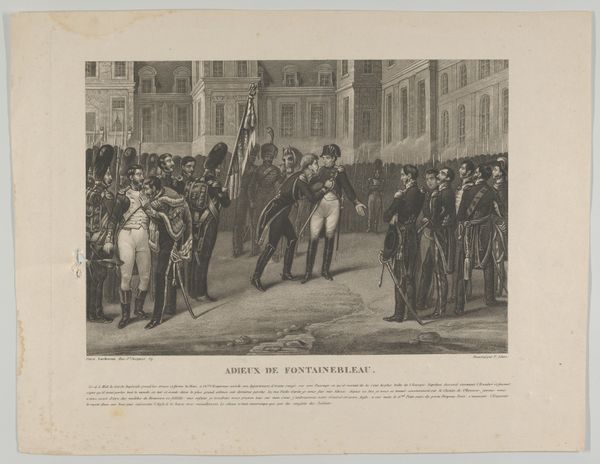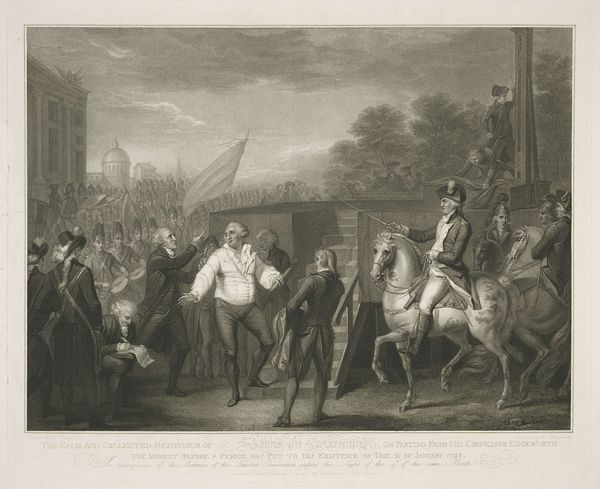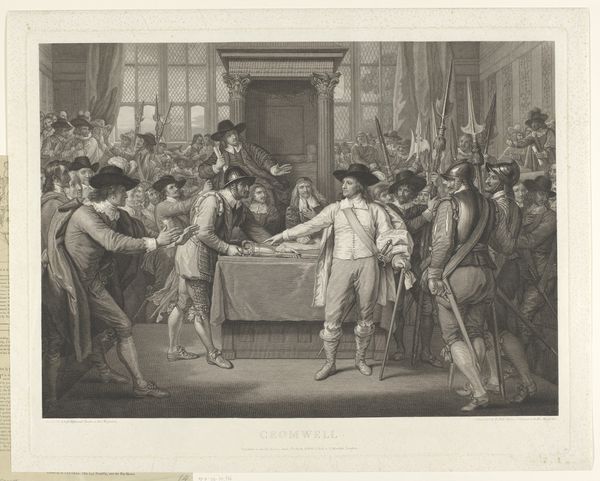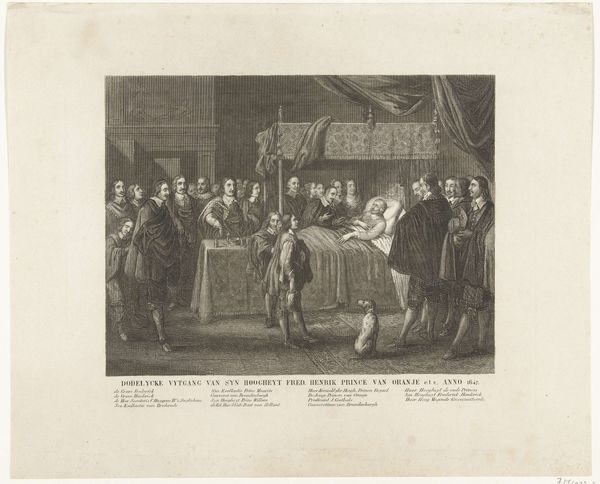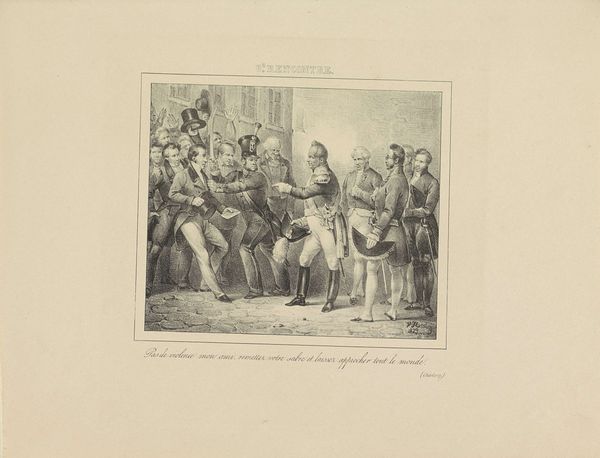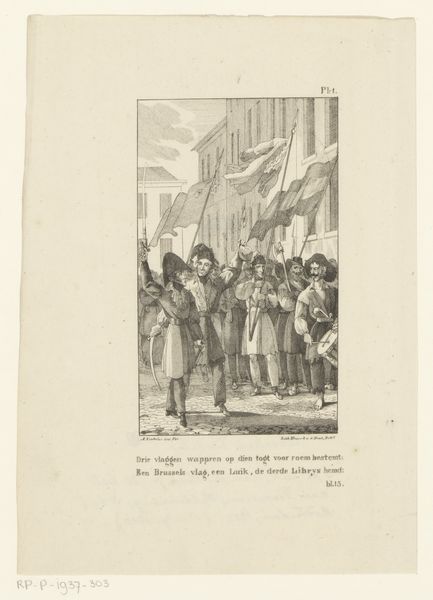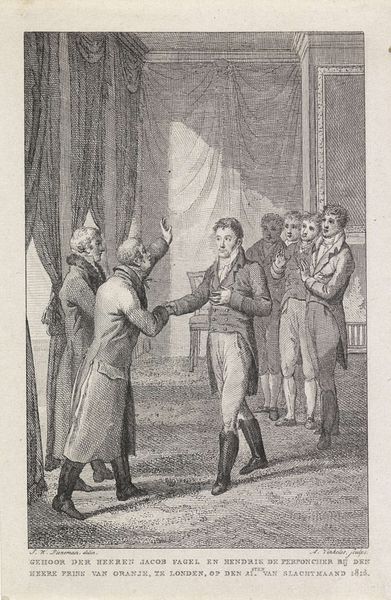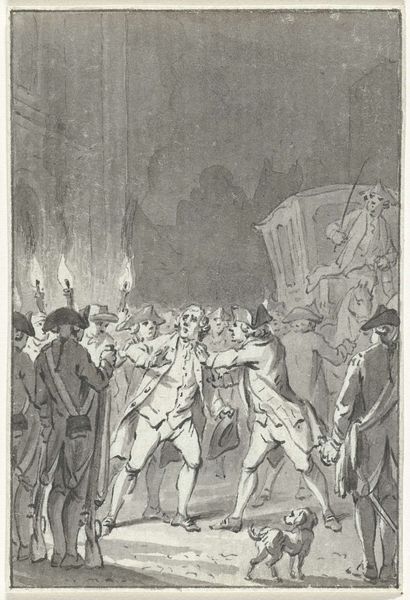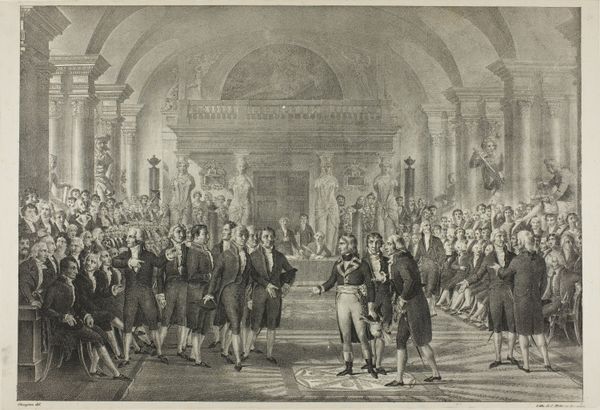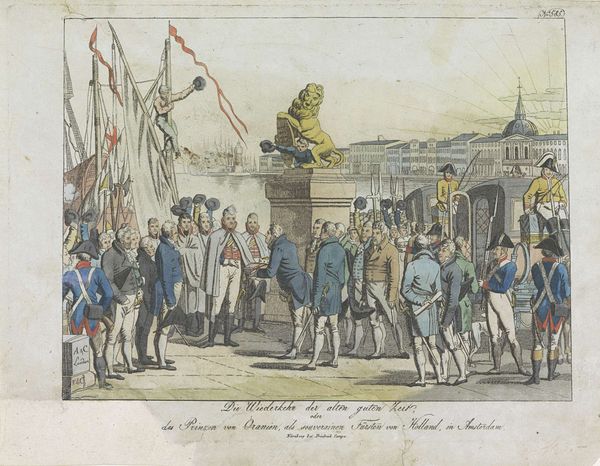
Napoleon I Bonaparte neemt afscheid van de Oude Garde in Fontainebleau op 20-04-1814 1814 - 1851
0:00
0:00
print, engraving
#
portrait
# print
#
figuration
#
archive photography
#
historical photography
#
historical fashion
#
old-timey
#
romanticism
#
19th century
#
history-painting
#
academic-art
#
engraving
Dimensions: height 747 mm, width 586 mm
Copyright: Rijks Museum: Open Domain
Vincenz Georg Kininger made this print of Napoleon's farewell in 1814 using a technique called etching, an intaglio printmaking method, on a metal plate. To create this print, the artist would have coated a metal plate with a waxy, acid-resistant substance, drawing through the coating to expose the metal. The plate was then immersed in acid, which bit into the exposed lines, creating grooves. The plate was then inked, and the surface wiped clean, leaving ink only in the etched lines. High pressure was then used to transfer the ink to paper, resulting in the image we see. Consider the skill and labor involved in the etching process. The level of detail achieved through the precise control of the etching and printing techniques reflects the social and cultural values placed on craftsmanship and artistry. The mass production of prints like these allowed for wider dissemination of political and historical imagery, shaping public opinion and collective memory in a rapidly changing Europe. Understanding the making of this print allows us to appreciate the convergence of technical skill, artistic expression, and social context.
Comments
No comments
Be the first to comment and join the conversation on the ultimate creative platform.
